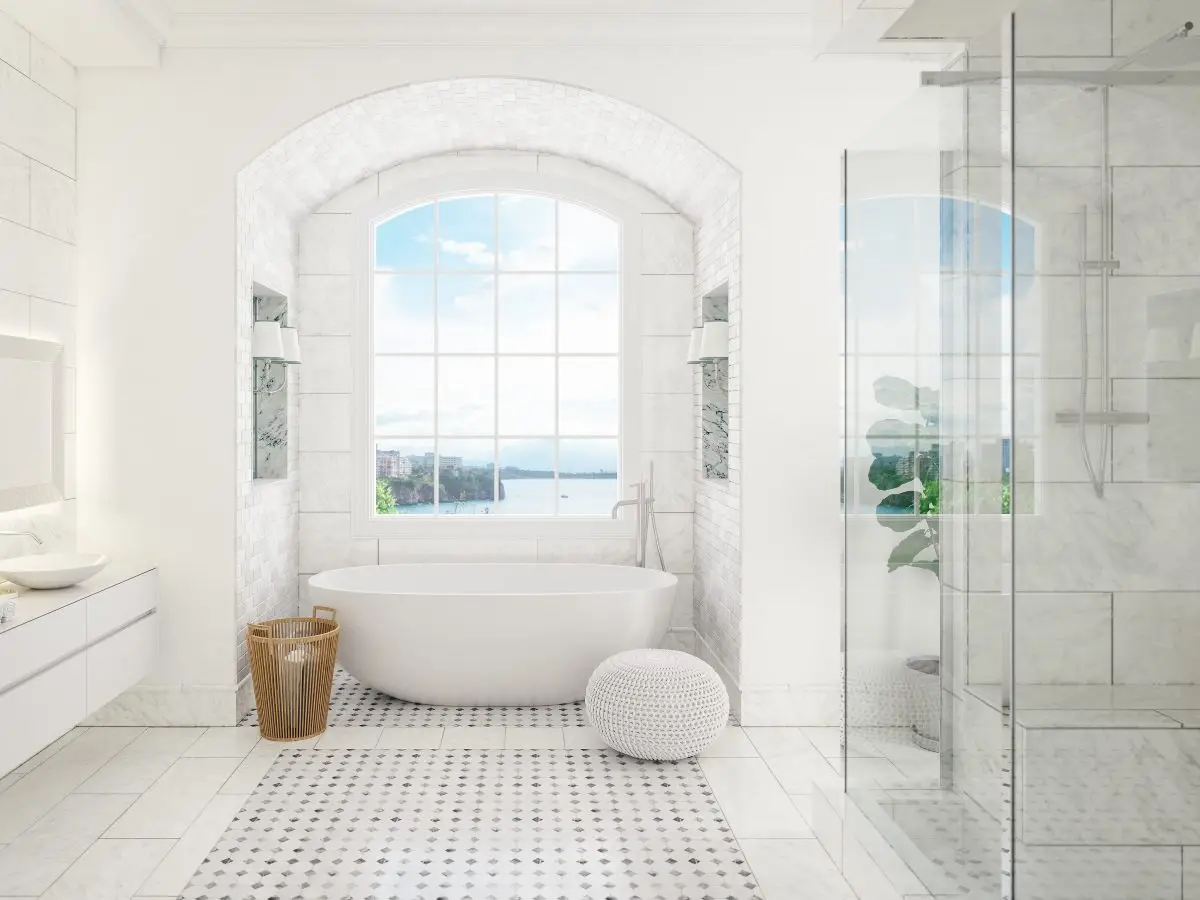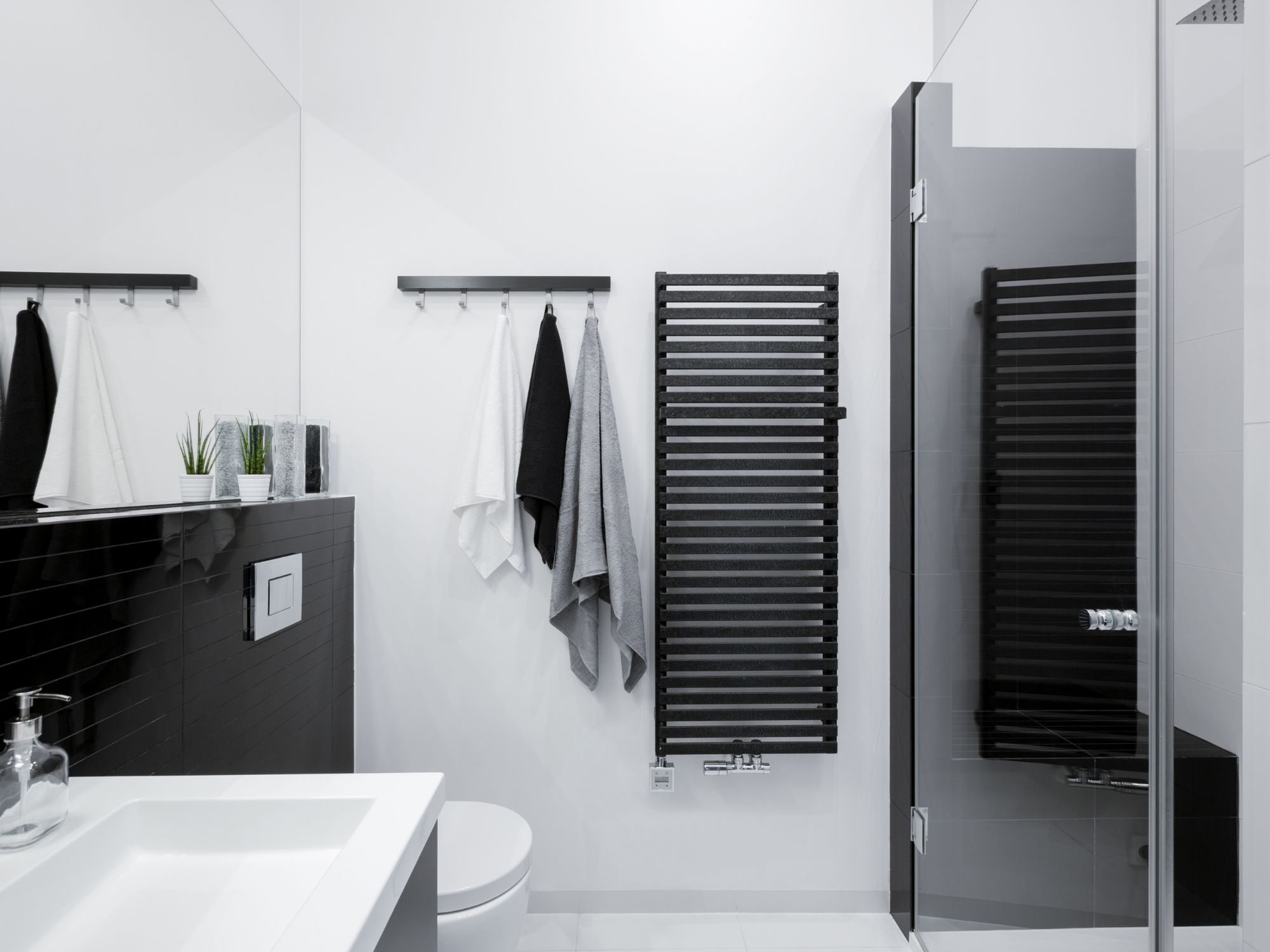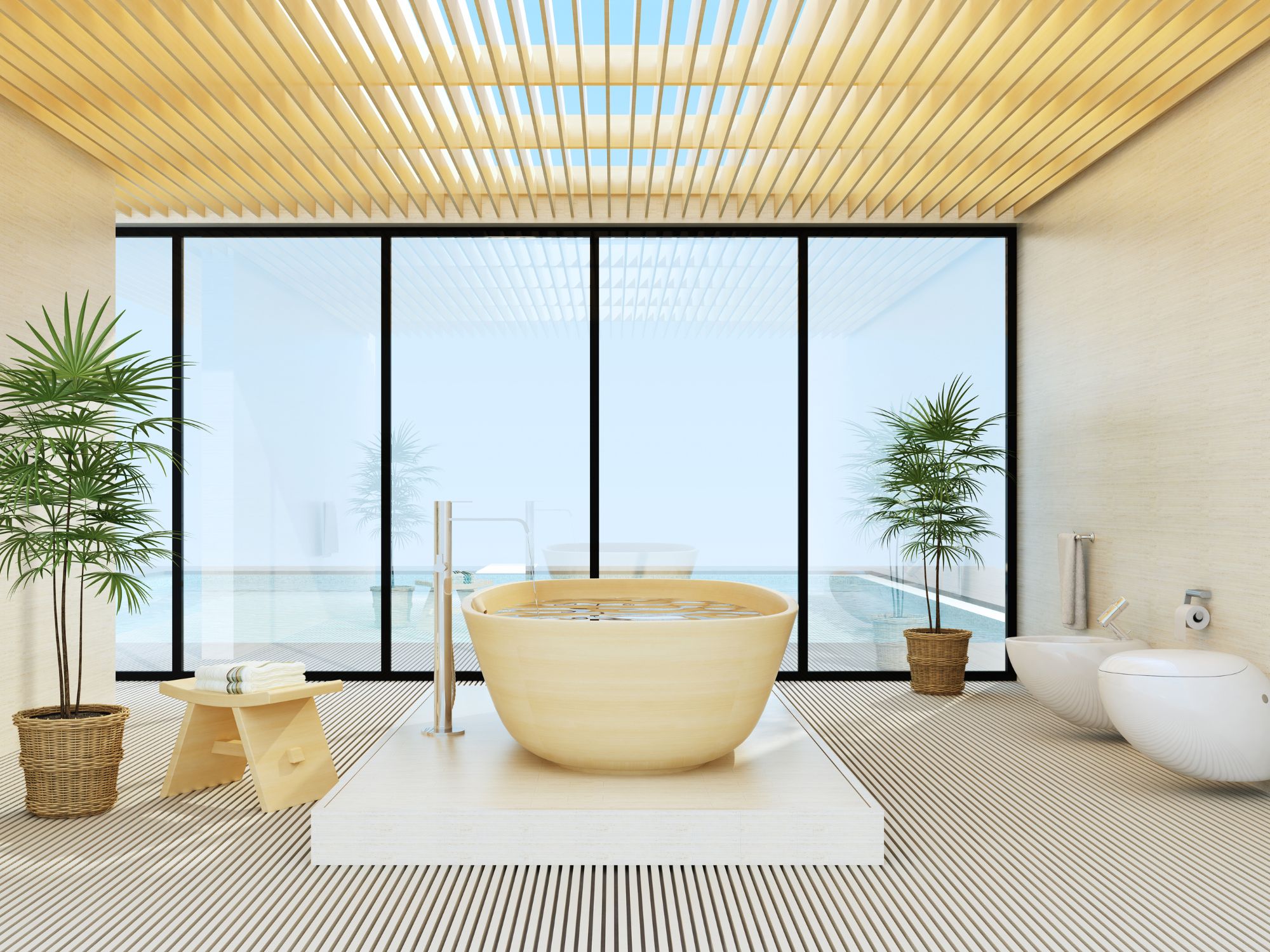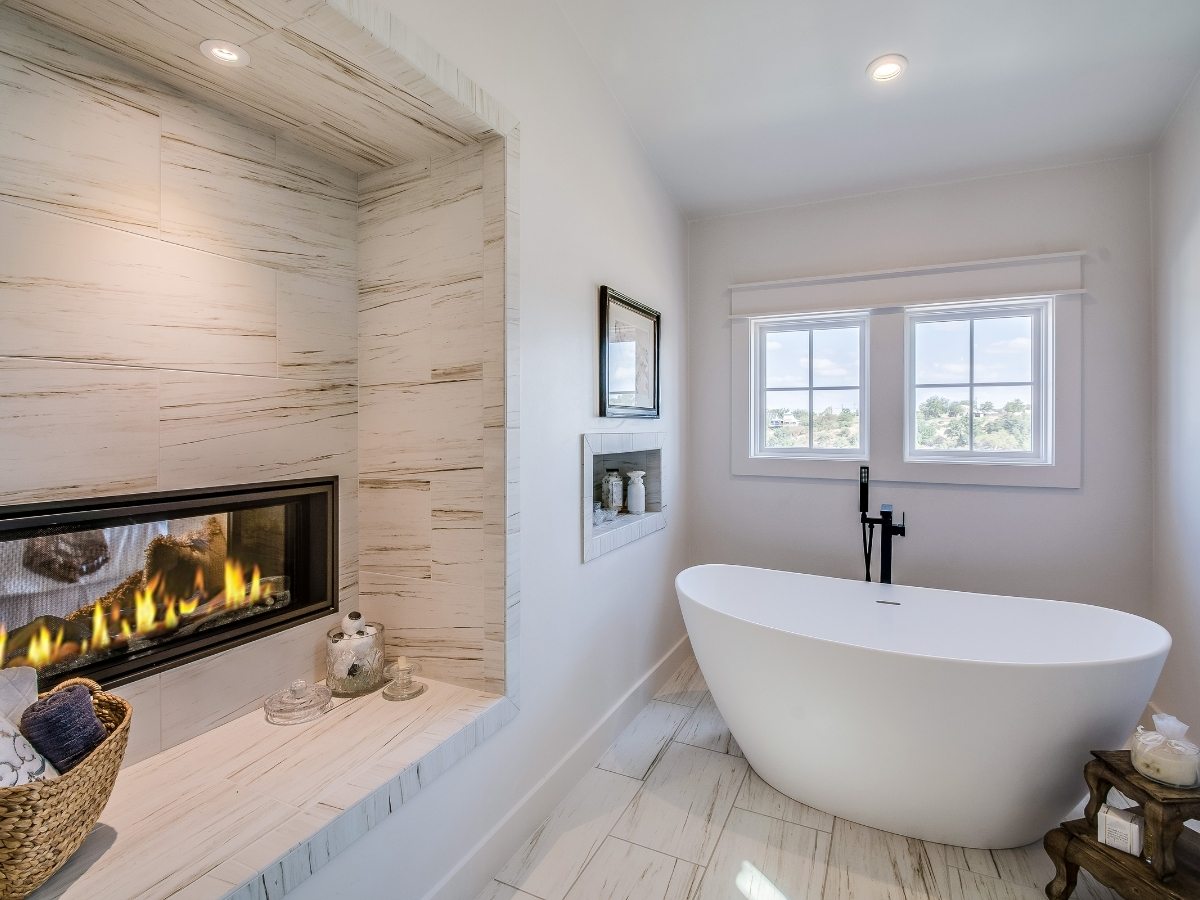This post may contain affiliate links which means I may receive a commission for purchases made through links. I only recommend products that I have personally used or curated specifically after reviewing and ensuring its quality! Learn more on my Private Policy page.
Bathroom Sinks
In today’s world, a bathroom sink is a statement piece that reflects style from sleek undermounts sinks and vessel sinks to high-tech smart sinks.
This article explores all aspect of bathroom sinks from price, types, materials, styles, depth, width, dimensions, number of sinks, and other essential factors to help you filter through products – for your bathroom sanctuary. We have curated a summary list of bathroom sinks for all your bathroom remodel needs.
Bathroom Sink Types
Undermount Sinks
Undermount bathroom sinks, installed beneath the countertop, offer a modern, seamless look ideal for high-end bathroom sink designs. They provide a contemporary appeal, enhancing countertop space and simplifying cleaning.
Bathroom sinks come in a variety of materials like ceramic and stainless steel and require solid countertops such as granite for installation.
Perfect for smaller bathrooms, undermount sinks blend functionality with a minimalist aesthetic.
Vessel Sinks
Vessel sinks, sitting atop counters, have soared in popularity due to their artistic flair. Available in materials ranging from glass to stone, they make bold design statements and allow creative freedom with shapes and colors.
They necessitate careful consideration of faucet height and placement, making them more suitable for design-centric bathrooms rather than high-traffic family ones.
Pedestal Sinks
Ideal for small or traditional bathrooms, pedestal sinks offer a classic look while saving space. Mounted on a pedestal that conceals plumbing, they lack the storage of vanity-mounted sinks but are perfect for powder rooms where space is limited.
Available in various styles, they accommodate diverse bathroom aesthetics.
Wall-Mounted Sinks
Wall-mounted sinks provide a space-saving, minimalist solution, ideal for modern, compact bathrooms. These sinks free up floor space and come in different sizes, depth, and styles, though they require robust wall support for installation.
Their exposed plumbing can be hidden or featured as part of an industrial-style design.
Console Sinks
Merging traditional and contemporary styles, console sinks stand on legs, offering a spacious feel. They often include built-in towel rails and are suitable for bathrooms blending different design elements.
Integrated Vanity Sinks
Integrated vanity sinks, where the basin is part of the vanity countertop, provide a streamlined, modern look. Easy to clean and available in various materials, they are ideal for sleek bathroom designs.
Damage to the sink, however, may require replacing the entire countertop.
Corner Sinks
Designed for small spaces, corner sinks fit neatly into bathroom corners, either as wall-mounted or pedestal options. They are smaller in dimensions and work well in tiny bathrooms or cloakrooms, maximizing the use of limited space.
Smart Sinks
Smart sinks incorporate cutting-edge technology, featuring touchless faucets, temperature control, and digital displays. They enhance hygiene and efficiency but come at a higher price and may need professional installation.
Ideal for tech-savvy homes, smart sinks bring a futuristic touch to bathroom design.
Explore Freestanding Tubs for your next Remodel project – Click Image Below

Styles and Shapes of A Modern Bathroom Sink
Contemporary Designs
Contemporary bathroom sinks emphasize minimalist lines, geometric shapes, and a blend of style with functionality. These designs range from angular, square, or rectangular to softer, round or oval shape. Materials like white porcelain, clear glass, and stainless steel are prevalent, creating a clean, uncluttered look.
Many contemporary sinks integrate the basin and countertop into one seamless piece, enhancing the modern aesthetic.
The key features of these designs include simplicity, sophistication, and a focus on a clutter-free space that marries form with function, fitting perfectly into a range of bathroom sizes and layouts.
Rustic and Vintage Styles
Rustic and vintage styles in bathroom sinks offer a warm, nostalgic feel, incorporating natural stone, distressed wood, and ornate metalwork. These designs evoke the past with their earthy tones and natural textures, creating a cozy atmosphere.
Vintage-style sinks often showcase intricate designs reminiscent of Victorian or colonial aesthetics. These sinks blend seamlessly with modern features, achieving a balance that respects tradition while incorporating contemporary functionality.
Custom Shapes and Materials
Custom-designed bathroom sinks present endless possibilities of dimensions, shapes, and material, allowing for a unique and personalized bathroom design. Crafted from unconventional materials like bespoke stone, hand-blown glass, or sculpted metal, these sinks become artistic centerpieces of the bathroom.
From organic shapes mimicking natural forms to sharp, geometric designs, custom sinks cater to any aesthetic preference.
The use of unique materials and craftsmanship ensures each sink is a distinctive piece, reflecting the homeowner’s individual style and creativity.
Bathroom Sink Color Trends
Modern bathroom sinks have evolved beyond traditional white and cream shades, embracing bolder and more varied color palettes. Matte black, gold, deep blues, and greens are trending for their dramatic and modern appeal, offering a sophisticated contrast to lighter interiors.
Pastel shades like soft pinks, light blues, and mint greens are also popular for creating a tranquil, spa-like feel.
Metallic finishes in gold, brass, or copper add luxury and elegance. These color trends allow for customization in bathroom design, enabling homeowners to create spaces that truly reflect their personal style and taste.
Aesthetic Features of A Modern Bathroom Sink
Material Choices
When selecting a bathroom sink, the material choice significantly influences aesthetics and durability. Ceramic and porcelain sinks are timeless, offering a broad range of styles and known for their ease of maintenance. They fit a variety of bathroom sizes and designs, making them a practical option for everyday use.
Glass sinks, while elegant and capable of creating an illusion of more space, need careful handling to prevent scratches. Metal sinks, especially those in stainless steel or copper, bring a contemporary, industrial edge to the bathroom.
For a touch of luxury, stone sinks made from granite, marble, or onyx provide a unique and opulent aesthetic. Each material presents its own benefits and challenges in terms of durability, maintenance, and style, allowing for a diverse range of options to suit different bathroom designs and user preferences.
Bathroom Sink Size and Proportion
Choosing the right dimension and proportion for a bathroom sink is crucial in maintaining balance in the overall bathroom layout. For smaller bathrooms or powder rooms, compact or corner sinks can save space while still adding style.
In larger bathrooms, a more generous-sized sink or double vanity can provide a luxurious feel and accommodate multiple users.
The proportion should also harmonize with other fixtures in the bathroom. It’s important to consider the dimensions (shape, width, depth) of the vanity and ensure the sink complements it without overwhelming the space.
Bathroom Sink Faucet Pairing
Selecting the right faucet is essential in complementing the style of the bathroom sink. For contemporary sinks, faucets with clean lines and minimalistic designs work best. Vessel sinks often require taller faucets with a longer reach, while undermount or integrated sinks might pair well with streamlined, low-profile faucets.
The finish of the faucet should also be considered – chrome, gold, brushed nickel, and matte black are popular choices that can either match or contrast with the sink, depending on the desired look.
It’s also important to ensure that the faucet’s water flow is appropriate for the sink dimension (width, depth) chosen to prevent splashing or water wastage.
Bathroom Sink Lighting and Accessories
Lighting plays a pivotal role in enhancing the aesthetic of a bathroom sink. Well-placed, soft lighting can accentuate the sink’s material and design, creating an inviting and functional space.
Pendant lights or wall sconces on either side of the mirror can provide balanced lighting for practical use and add a decorative touch.
Accessories like soap dispensers, toothbrush holders, and towel racks should complement the sink’s style and finish. For a cohesive look, choose accessories that match the sink’s material or color palette.
Additionally, decorative elements like plants or art pieces can be used to personalize the space and add warmth to the bathroom’s ambiance.
Bathroom Sink – Installation Types
Countertop Installation
Countertop installation, particularly for undermount and vessel sinks, requires precise measurements and careful planning. For undermount sinks, the countertop needs an accurately sized cut-out to ensure the sink fits snugly underneath.
This type of installation is ideal for stone or solid surface countertops, as they provide the necessary support and waterproofing. Vessel sinks, on the other hand, sit on top of the counter, demanding a hole for the drain and possibly another for the faucet, depending on the design.
It’s crucial to ensure the countertop’s height and material are compatible with a vessel sink, as these factors significantly influence usability and comfort.
Bathroom Sink Wall-Mount Installation
Wall-mounted sinks are a stylish and space-saving option but require specific technical considerations for proper installation. The primary concern is ensuring that the wall has sufficient support to bear the weight of the sink, which may involve reinforcing the wall structure.
Additionally, plumbing needs to be carefully planned and often concealed within the wall for a clean, minimalist look. This installation type is perfect for small bathrooms but might require professional installation to ensure safety and functionality.
The height at which the sink is mounted should also be considered for comfortable and ergonomic use.
Bathroom Sink Pedestal and Console Sink Installation
Pedestal and console sinks add elegance to a bathroom, but their installation has unique space and plumbing considerations. Pedestal sinks feature a basin atop a slender base, which hides the plumbing.
This setup requires careful alignment of the plumbing within the pedestal, making it a slightly more complex installation than vanity-mounted sinks. Console sinks, with their open base design, offer a bit more flexibility in plumbing but may require additional support structures, especially for heavier materials.
Both types demand precise measurement and planning to ensure they fit well in the designated space and align correctly with existing plumbing.
Bathroom Sink Integrated Systems
Integrated sink systems, where the sink is seamlessly combined with the bathroom vanity or counter, offer a sleek and modern look. These systems are often custom-designed to fit specific spaces and design aesthetics.
The integration allows for a uniform appearance and can be made from various materials, such as porcelain, stone, or solid surface composites. The installation of integrated systems is typically more complex than standalone sinks, as it involves coordinating the sink with the vanity unit.
This type of installation is ideal for contemporary bathrooms looking for a clean and cohesive design but requires careful planning and, often, professional assistance to ensure proper fit and installation.
Bathroom Sink – Technologies
Eco-Friendly Innovations
Modern bathroom sinks are increasingly incorporating eco-friendly innovations to conserve water and use sustainable materials. Water-saving technologies, such as low-flow faucets and aerators, significantly reduce water usage without compromising performance.
Sinks made from recycled materials or sustainably sourced stone also contribute to a greener bathroom design. These environmentally conscious choices not only help in reducing the ecological footprint but also offer cost savings in the long term, as they minimize water usage.
Smart Features
The integration of smart technology into bathroom sinks is revolutionizing user experience. Touchless faucets, activated by motion sensors, enhance hygiene and convenience while conserving water.
Advanced models offer temperature and flow control via digital interfaces, allowing users to customize their experience and even save their preferences. Some smart sinks are equipped with digital displays providing information like water temperature and usage, making them not just functional but also informative.
Hygiene Innovations
Hygiene is a paramount concern in bathroom design, leading to the development of sinks with antimicrobial surfaces and self-cleaning technologies. Materials like copper, known for its natural antimicrobial properties, are becoming popular in sink manufacturing.
Additionally, some modern bathroom sinks incorporate self-cleaning technologies using UV light or specialized coatings that break down dirt and bacteria, keeping the sink cleaner and reducing the need for harsh chemicals.
Integrated Entertainment
Entertainment features are the latest trend in high-end bathroom sinks. Waterproof screens embedded in mirrors or vanity units allow users to watch news, check the weather, or stream videos while getting ready.
Bluetooth speakers integrated into the bathroom sinks or vanities setup offer a personalized audio experience, allowing users to listen to music or podcasts. These entertainment features bring a touch of luxury to the daily routine, making the bathroom a space for relaxation and enjoyment.
Selecting the Right Bathroom Sink
Assessing Bathroom Space and Layout
Choosing the right bathroom sinks involves careful consideration of space and layout. Measure the available space accurately to ensure the sink fits comfortably without overcrowding the room.
For smaller bathrooms, consider space-saving options like corner or wall-mounted sinks. In larger bathrooms, a double vanity sink might be more appropriate.
Also, think about the sink’s placement in relation to other elements like the toilet and shower, ensuring a practical and accessible layout.
Considering Usage and Practicality
When selecting a bathroom sink, consider how it will be used in your daily life. For high-traffic family bathrooms, choose durable, easy-to-clean materials like porcelain or stainless steel.
If the bathroom is used primarily for quick wash-ups, a simple design might suffice, while a more luxurious sink may be suitable for a master bath.
Think about the height of the bathroom sinks for comfortable use by all family members and the type of activities it needs to accommodate, like shaving or hair washing.
Budget Considerations For A Bathroom Sink
Balancing aesthetics, technology, and cost is crucial when choosing a bathroom sink. Determine your budget beforehand and decide which features are must-haves and which you can live without. Buying products on sale is always the right price.
Remember that investing in high-quality materials can save money in the long run due to their durability. Also, consider the cost of installation, especially for more complex setups like integrated or custom-designed sinks, and factor in potential plumbing modifications.
Future-Proofing
When investing in new bathroom sinks, consider its longevity and timeless design. Choose a style that not only suits your current taste but will also remain appealing and functional in the years to come.
Opt for high-quality materials and construction to ensure the sink withstands the test of time. Also, consider the evolving needs of your household; for instance, bathroom sinks that are accessible for all ages can be a wise choice for a future-proof bathroom design.
Bathroom Sink – Selection Checklist
When choosing the perfect bathroom sink, consider the following factors to ensure you select the best option for your space and needs:
Assess Your Bathroom Space and Layout – width, depth, shape
- Measure the available space for the sink.
- Consider the overall bathroom layout.
- Determine the sink location relative to other fixtures.
- Number of Sinks Required
Choose the Right Type of Bathroom Sink
- Undermount for a seamless, minimalist look.
- Vessel for a statement piece.
- Pedestal for space-saving in small bathrooms.
- Wall-mounted for a modern, space-efficient style.
- Console for a blend of traditional and modern.
- Integrated vanity for a sleek, unified countertop.
- Corner sink for maximizing small spaces.
- Smart sink for high-tech features.
Select the Appropriate Material
- Ceramic or porcelain for durability and ease of cleaning.
- Glass for elegance and spacious feel.
- Metal (stainless steel, copper) for a contemporary look.
- Stone (granite, marble, onyx) for luxury.
Consider Size and Proportion
- Ensure the bathroom sink dimensions that complements the bathroom scale.
- Choose a depth, and width that fits the vanity or counter space.
Decide on Style and Shape
- Select a style that matches your bathroom decor (contemporary, rustic, vintage).
- Choose a shape that fits your aesthetic preference.
Determine Color and Finish
- Decide on a color that matches or contrasts with your bathroom palette.
- Consider finishes like matte, glossy, gold, or metallic.
Factor in Faucet Compatibility
- Ensure the bathroom sink and faucet are compatible in style and function.
- Check faucet height and reach for vessel sinks.
Evaluate Practicality and Usage
- Consider who will be using the sink and how.
- Assess the sink’s depth and width for your needs.
Consider Eco-Friendly and Smart Features
- Look for water-saving technologies.
- Consider smart features if you prefer high-tech options.
- Ensure to explore all variations of products
Set a Budget
- Determine your price range and monitor when there is a sale.
- Balance cost with desired features and quality.
- Placing orders for products online is flexible as preferences can use a filter to make buying decisions.
Think About Future Needs
- Choose sink products with timeless design for longevity.
- Consider ease of use for all ages and accessibility.
- Number of Sinks Required
Featured Related Blog Article – Selecting Smart Toilets for Bathrooms












